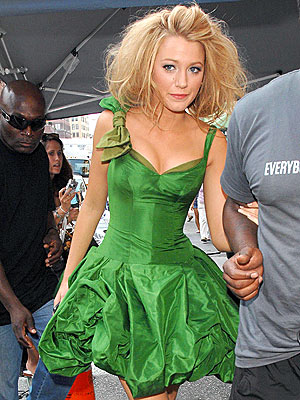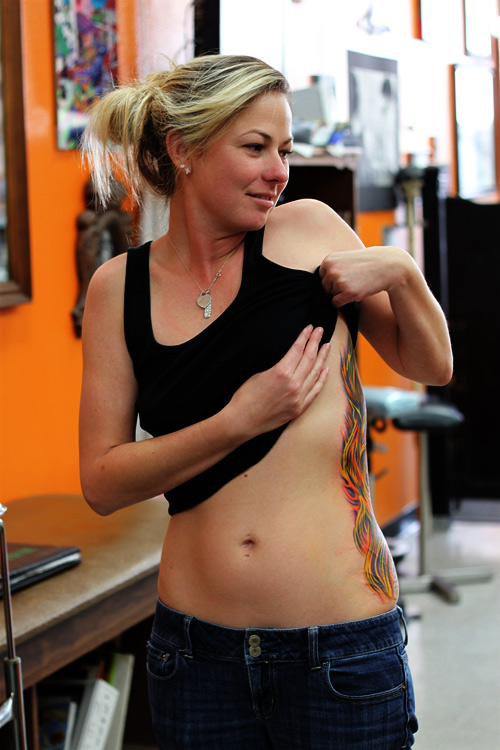source(google.com.pk)
Hot Mess Pictures Biography
The Money Makes the Girl$ Go Round Songfacts says that Official Hot Mess is an American teen pop-rock band formed in 2007 in Sarasota Florida by co-vocalists Kristy and Lindsey Landers. At the age of five, the sisters composed and performed their first songs on a PBS children’s television show. They later formed Official Hot Mess whilst still at school with rhythm guitarist Adam Evans, bass player Billy Burke, lead guitarist Jake Freeman and drummer Joe Pezzino.
The band garnered media attention and a cult following after scoring their first record deal before graduating high school. They released their debut album on September 5, 2007, Fallin’ Angel under the recording label King Records, a division of Sony Music Japan. The band’s music video for their first single, “Welcome 2 LA” was premiered on MTVU on April 30, 2010. The follow-up, “Money Makes the Girl$ Go Round,” was premiered on AOL Music and AOL Radio on September 30, 2010.
A mess (also called a messdeck aboard ships) is the place where military personnel socialise, eat, and (in some cases) live. In some societies this military usage has extended to other disciplined services eateries such as civilian fire fighting and police forces. The root of mess is the Old French mes, "portion of food" (cf. modern French mets), drawn from the Latin verb mittere, meaning "to send" and "to put" (cf. modern French mettre), the original sense being "a course of a meal put on the table". This sense of mess, which appeared in English in the 13th century, was often used for cooked or liquid dishes in particular, as in the "mess of pottage" (porridge or soup). By the 15th century, a group of people who ate together was also called a mess, and it is this sense that persists in the "mess halls" of the modern military.
Messing in the Canadian Forces generally follows the British model (see United Kingdom below), from whom most traditions have descended. Basic regulations regarding the establishment and administration of messes is contained in the Queen's Regulations and Orders and the Canadian Forces Administrative Orders.
As in the British Forces, there are normally three messes: the Officers' Mess (called the Wardroom in Naval establishments), for commissioned officers and officer cadets; the Warrant Officers' and Sergeants' Mess (Navy: Chiefs' and Petty Officers' Mess), for senior non-commissioned officers and warrant officers; and the Junior Ranks Mess, for junior non-commissioned officers, privates, and seamen. Some bases, such as CFB Kingston in the 1980s, had a Master Corporals' Mess separate from the Junior Ranks'; all of these, with the exception of the CFB Valcartier Master Corporals mess (known as the "Mess des chefs"), have since been amalgamated with the Junior Ranks' Messes. Certain other bases, mainly training establishments such HMCS Venture have messes known as the Gun Room for the use of subordinate officers (Naval or Officer Cadets).
Most bases and stations have three messes (Officers', Warrant Officers' and Sergeants', and Junior Ranks'). Many of these establishments have lodger units (such as air squadrons, army regiments, etc.) who also have their own messes. All of Her Majesty's Canadian Ships have three messes aboard; this extends to Naval Reserve Divisions and other Naval shore establishments which bear the title HMCS (see stone frigate). Due to limited budgets and declining revenues, many messes have been forced to close or amalgamate: for example, at CFS St. John's, the Junior Ranks' Mess of the Newfoundland Militia District closed, its members moving to the Station's Junior Ranks'; the Station's Officers' Mess and Warrant Officers' and Sergeants' Mess later amalgamated.
Headgear is not worn in Canadian Messes[citation needed], except:
by personnel on duty, such as a Duty or Watch Officer, or the Military Police;
as permitted on special occasions, such as during costume parties, theme events, etc.;
by personnel for whom wearing headgear is mandatory (e.g. for religious reasons).
All Canadian Forces personnel, Regular and Reserve, must belong to a mess, and are termed ordinary members of their particular mess. Although normally on Federal property, messes have been ordered to comply with the legal drinking age laws of their province[citation needed]; for example, an 18-year-old soldier may legally consume alcohol in a Quebec mess, but not in one in Ontario, where the legal age is 19. However, despite being underage, the soldier may not be prohibited entry into the mess[citation needed].
Canadian Forces personnel are normally welcome in any mess of their appropriate rank group, regardless of element; thus a Regimental Sergeant-Major of an Infantry battalion is welcome in a Chiefs' and Petty Officers' Mess (inter-service rivalries notwithstanding). Personnel of a different rank (except as noted below) must ask for permission to enter; that may be granted by the President of the Mess Committee, his designate, or the senior member present.
These restrictions are normally waived on certain special occasions, when the messes are "opened" to all personnel, regardless of rank. These occasions may include (and will be locally published by the Mess Committee)[citation needed]:
New Year's Day, January 1, called a "Levee"
Canada Day, July 1
Remembrance Day, November 11
The Commanding Officer of the establishment or unit that owns the mess is permitted access to all his messes; thus a ship's captain has access to his vessel's Chiefs' and Petty Officers' Mess, the Commanding Officer of a regiment may enter any of his regimental messes, and the Base Commander of a Canadian Forces Base is welcome in any of his base's messes. In practice, Commanding Officers rarely enter anything other than the Officers' Mess unless invited, as a point of etiquette. In addition, duty personnel — such as a Duty NCO or Officer of the Watch — or the Military Police have access to any and all messes for the purposes of maintaining good order and discipline. Chaplains are usually welcomed in all messes.
As in the UK, Canadian messes are run by the Mess Committee, a group democratically elected by the members of the mess. One exception is on warships, where the president of the junior ranks mess is appointed by the Commanding Officer. The Committee members are generally the same as those of their British counterparts, with the addition of special representatives for such things as sports, housing, morale, etc. These positions are normally spelled out in the mess constitution, which sets out the bylaws, regulations, and guidelines for such things as conduct of mess meetings, associate memberships, dress regulations within the mess, or booking of the mess by civilian organizations. The constitution and any amendments are voted upon by the members of the mess.
Social clubs on United States Air Force installations were at one time called Open Messes, even though most were known in vernacular as Officers Clubs or NCO clubs. Those for officers were able to utilize their initials as colorful acronyms, among the more well-known of which in the 1960s and 1970s were Zaragosa and Zweibrücken (ZOOM), Danang (DOOM), Ramstein (ROOM), and Korat or Kirtland [Air Base]s (KABOOM).
At one time each squadron had its club, but these disappeared after World War II and the club became a facility of a base rather than a unit. Most are now officially referred to as officer or enlisted clubs; the term "mess" has largely disappeared from the Air Force lexicon. Though a few bases (usually major training bases) have separate Airmen's Clubs for junior enlisted and NCO Clubs for noncommissioned officers, this is no longer normally the case. Physically separate Officers' Clubs are still the norm; however, smaller Air Force installations may have one consolidated club with separate lounges. Membership is voluntary, though highly encouraged for senior NCOs and officers. Most NCO and Officers Clubs contain a sit-down restaurant in addition to social lounges, meeting/dining rooms, and bars.
Mess halls in the USAF, where unmarried junior enlisted residing in the dormitories are expected to eat, are officially referred to as "dining facilities," but are colloquially called "chow halls," although dining facility workers traditionally take offense at the term.
Hot Mess Pictures Biography
The Money Makes the Girl$ Go Round Songfacts says that Official Hot Mess is an American teen pop-rock band formed in 2007 in Sarasota Florida by co-vocalists Kristy and Lindsey Landers. At the age of five, the sisters composed and performed their first songs on a PBS children’s television show. They later formed Official Hot Mess whilst still at school with rhythm guitarist Adam Evans, bass player Billy Burke, lead guitarist Jake Freeman and drummer Joe Pezzino.
The band garnered media attention and a cult following after scoring their first record deal before graduating high school. They released their debut album on September 5, 2007, Fallin’ Angel under the recording label King Records, a division of Sony Music Japan. The band’s music video for their first single, “Welcome 2 LA” was premiered on MTVU on April 30, 2010. The follow-up, “Money Makes the Girl$ Go Round,” was premiered on AOL Music and AOL Radio on September 30, 2010.
A mess (also called a messdeck aboard ships) is the place where military personnel socialise, eat, and (in some cases) live. In some societies this military usage has extended to other disciplined services eateries such as civilian fire fighting and police forces. The root of mess is the Old French mes, "portion of food" (cf. modern French mets), drawn from the Latin verb mittere, meaning "to send" and "to put" (cf. modern French mettre), the original sense being "a course of a meal put on the table". This sense of mess, which appeared in English in the 13th century, was often used for cooked or liquid dishes in particular, as in the "mess of pottage" (porridge or soup). By the 15th century, a group of people who ate together was also called a mess, and it is this sense that persists in the "mess halls" of the modern military.
Messing in the Canadian Forces generally follows the British model (see United Kingdom below), from whom most traditions have descended. Basic regulations regarding the establishment and administration of messes is contained in the Queen's Regulations and Orders and the Canadian Forces Administrative Orders.
As in the British Forces, there are normally three messes: the Officers' Mess (called the Wardroom in Naval establishments), for commissioned officers and officer cadets; the Warrant Officers' and Sergeants' Mess (Navy: Chiefs' and Petty Officers' Mess), for senior non-commissioned officers and warrant officers; and the Junior Ranks Mess, for junior non-commissioned officers, privates, and seamen. Some bases, such as CFB Kingston in the 1980s, had a Master Corporals' Mess separate from the Junior Ranks'; all of these, with the exception of the CFB Valcartier Master Corporals mess (known as the "Mess des chefs"), have since been amalgamated with the Junior Ranks' Messes. Certain other bases, mainly training establishments such HMCS Venture have messes known as the Gun Room for the use of subordinate officers (Naval or Officer Cadets).
Most bases and stations have three messes (Officers', Warrant Officers' and Sergeants', and Junior Ranks'). Many of these establishments have lodger units (such as air squadrons, army regiments, etc.) who also have their own messes. All of Her Majesty's Canadian Ships have three messes aboard; this extends to Naval Reserve Divisions and other Naval shore establishments which bear the title HMCS (see stone frigate). Due to limited budgets and declining revenues, many messes have been forced to close or amalgamate: for example, at CFS St. John's, the Junior Ranks' Mess of the Newfoundland Militia District closed, its members moving to the Station's Junior Ranks'; the Station's Officers' Mess and Warrant Officers' and Sergeants' Mess later amalgamated.
Headgear is not worn in Canadian Messes[citation needed], except:
by personnel on duty, such as a Duty or Watch Officer, or the Military Police;
as permitted on special occasions, such as during costume parties, theme events, etc.;
by personnel for whom wearing headgear is mandatory (e.g. for religious reasons).
All Canadian Forces personnel, Regular and Reserve, must belong to a mess, and are termed ordinary members of their particular mess. Although normally on Federal property, messes have been ordered to comply with the legal drinking age laws of their province[citation needed]; for example, an 18-year-old soldier may legally consume alcohol in a Quebec mess, but not in one in Ontario, where the legal age is 19. However, despite being underage, the soldier may not be prohibited entry into the mess[citation needed].
Canadian Forces personnel are normally welcome in any mess of their appropriate rank group, regardless of element; thus a Regimental Sergeant-Major of an Infantry battalion is welcome in a Chiefs' and Petty Officers' Mess (inter-service rivalries notwithstanding). Personnel of a different rank (except as noted below) must ask for permission to enter; that may be granted by the President of the Mess Committee, his designate, or the senior member present.
These restrictions are normally waived on certain special occasions, when the messes are "opened" to all personnel, regardless of rank. These occasions may include (and will be locally published by the Mess Committee)[citation needed]:
New Year's Day, January 1, called a "Levee"
Canada Day, July 1
Remembrance Day, November 11
The Commanding Officer of the establishment or unit that owns the mess is permitted access to all his messes; thus a ship's captain has access to his vessel's Chiefs' and Petty Officers' Mess, the Commanding Officer of a regiment may enter any of his regimental messes, and the Base Commander of a Canadian Forces Base is welcome in any of his base's messes. In practice, Commanding Officers rarely enter anything other than the Officers' Mess unless invited, as a point of etiquette. In addition, duty personnel — such as a Duty NCO or Officer of the Watch — or the Military Police have access to any and all messes for the purposes of maintaining good order and discipline. Chaplains are usually welcomed in all messes.
As in the UK, Canadian messes are run by the Mess Committee, a group democratically elected by the members of the mess. One exception is on warships, where the president of the junior ranks mess is appointed by the Commanding Officer. The Committee members are generally the same as those of their British counterparts, with the addition of special representatives for such things as sports, housing, morale, etc. These positions are normally spelled out in the mess constitution, which sets out the bylaws, regulations, and guidelines for such things as conduct of mess meetings, associate memberships, dress regulations within the mess, or booking of the mess by civilian organizations. The constitution and any amendments are voted upon by the members of the mess.
Social clubs on United States Air Force installations were at one time called Open Messes, even though most were known in vernacular as Officers Clubs or NCO clubs. Those for officers were able to utilize their initials as colorful acronyms, among the more well-known of which in the 1960s and 1970s were Zaragosa and Zweibrücken (ZOOM), Danang (DOOM), Ramstein (ROOM), and Korat or Kirtland [Air Base]s (KABOOM).
At one time each squadron had its club, but these disappeared after World War II and the club became a facility of a base rather than a unit. Most are now officially referred to as officer or enlisted clubs; the term "mess" has largely disappeared from the Air Force lexicon. Though a few bases (usually major training bases) have separate Airmen's Clubs for junior enlisted and NCO Clubs for noncommissioned officers, this is no longer normally the case. Physically separate Officers' Clubs are still the norm; however, smaller Air Force installations may have one consolidated club with separate lounges. Membership is voluntary, though highly encouraged for senior NCOs and officers. Most NCO and Officers Clubs contain a sit-down restaurant in addition to social lounges, meeting/dining rooms, and bars.
Mess halls in the USAF, where unmarried junior enlisted residing in the dormitories are expected to eat, are officially referred to as "dining facilities," but are colloquially called "chow halls," although dining facility workers traditionally take offense at the term.
Hot Mess Picture
Hot Mess Picture
Hot Mess Picture
Hot Mess Picture
Hot Mess Picture
Hot Mess Picture
Hot Mess Picture
Hot Mess Picture
Hot Mess Picture
Hot Mess Picture
Hot Mess Picture
Hot Mess Picture
Hot Mess Picture
Hot Mess Picture
Hot Mess Pictures














No comments:
Post a Comment